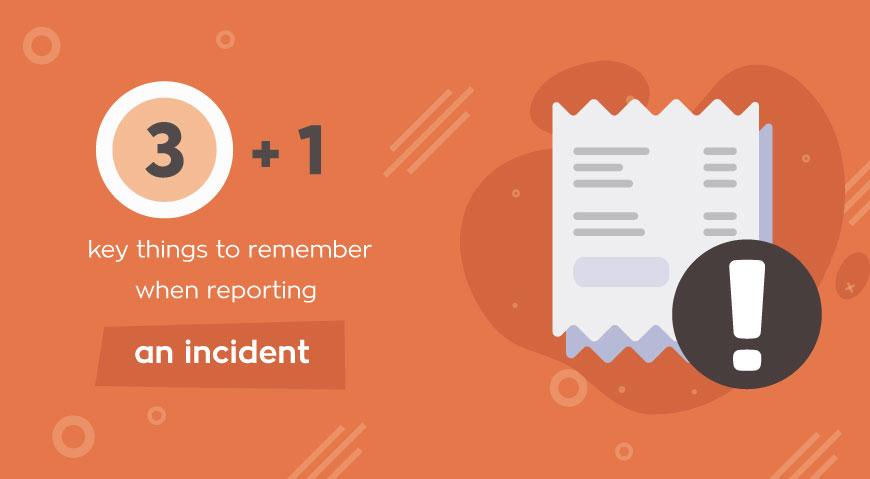3+1 key things to remember when reporting an incident
I’m sure you’ve seen many incidents reported in “weird” ways. I’m also sure that on the guard’s side, you know from experience that incidents, 9 out of 10 times, are not reported in the best possible way. Sooner or later, to work towards a positive outcome, whether as a manager or a guard, you’ll have to work on your incident reporting process. This can be validated if you think a little more about the importance of proper logging.
It can be said that the detailed, complete, and accurate recording of a problem probably accounts for more than 50% of its solution. Breaking down the problem-solving process and even better the lifecycle of an incident, we’ll see that it includes the following elements:
- Identification & logging
- Prioritization
- Investigation & Diagnosis
- Resolution & Recovery
- Closure
On a quick side note, with the exception of Phase 1, which includes incident reporting, in Phases 2 and 3, managers rely on the information they receive from the field to initiate Phase 4, resolution, recovery, and closure. The more information handlers identify in the incident, the more targeted they will be to guide further actions.
Ηow to write a detailed incident report
A report should therefore meet a few simple requirements to give the manager all the information needed to take the next steps – so what would one need to initiate the process?
- Don’t forget to include location information or location stamp.
- Rely on what you saw
- Add audiovisual material
- Take a last look before you send it
- Closure
 Perhaps the main obstacle to incident management is time. Therefore, letting the manager know exactly where the evidence was found is the first step to a faster resolution. Always the goal is the last phase of the cycle.
Perhaps the main obstacle to incident management is time. Therefore, letting the manager know exactly where the evidence was found is the first step to a faster resolution. Always the goal is the last phase of the cycle.
 Try to record the events you have observed as you observe them, ideally avoiding interrupting the recording multiple times so as not to falsify the events.
Try to record the events you have observed as you observe them, ideally avoiding interrupting the recording multiple times so as not to falsify the events.
 While this isn’t possible in many emergency situations, match your written descriptions with audio messages, photo and video captions. One picture for a thousand words.
While this isn’t possible in many emergency situations, match your written descriptions with audio messages, photo and video captions. One picture for a thousand words.
 Finally, and perhaps most importantly, quickly review what you have recorded. Chances are, in your hurry, you made a typo or forgot to add something that at first glance seems necessary.
Finally, and perhaps most importantly, quickly review what you have recorded. Chances are, in your hurry, you made a typo or forgot to add something that at first glance seems necessary.
By perfecting phase 1 of identification and logging, you’ve created the ideal conditions for immediate prioritization by incident importance, rapid mobilization, and resolution in less than half the time.
From there it is up to the manager, having access to a centralized database visualized in an incident management grid, to take the necessary steps and set the right conditions to be proactive and not just reactive.
For a creative discussion feel free to contact us at info@usnatek.com

